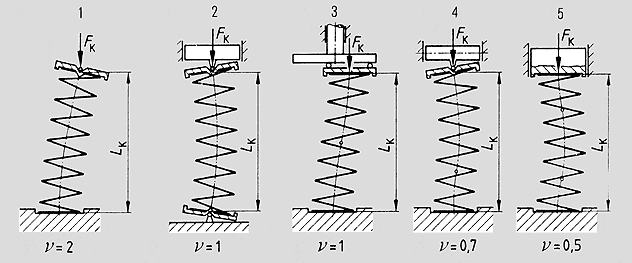| Buckling strength | ||
The slimmer a compression spring, the greater the risk of it buckling when being compressed. With the graph it is possible to determine at which installation width this buckling risk begins or whether this risk exists for a spring with given dimensions in a planned installation space. Buckling stability is conditional not only on the spring's slenderness ratio, however, but also on the spring end bearing (designated in the graph). Five types of bearing are possible (see drawing) according to DIN 2089 T1 (December 1984). Case 5 is the planned state of a mechanical seal's spring loading. Cases 3 and 4 can arise from assembly and angularity errors. Buckling stability exists theoretically for an imaginary root value and
for FK = critical spring force [N] L0 = spring length [mm] LK = critical spring length [mm] D = mean coil diameter [mm] S = spring deflection [mm] SK = critical spring deflection [mm] n = bearing coefficient [-]
|
Theoretical buckling limits of helical compression springs
|
|
Types of bearing with respective bearing coefficients of
axially loaded helical compression springs |
||